How to Make Your Wood Burning Stove More Efficient
A traditional wood burning stove makes a fantastic addition to the home. But, it’s not quite so fantastic if it starts burning inefficiently. A stove which is burning inefficiently will not only use more fuel, but can be smoky and difficult to light. So, if you want to avoid those issues and get your wood burning stove working efficiently, keep reading!
Issue: insufficiently seasoned firewood
There are many reasons why your stove could be burning inefficiently and leaking smoke, with one of the more common reasons being that you are burning insufficiently seasoned firewood.
Properly seasoned firewood should have a moisture content of 20% (or less). If you try to burn firewood which has a higher moisture content than this, then you’ll end up with far too much smoke - which will often leak out of the stove and into your living room.
Not only is insufficiently seasoned firewood smoky, but it burns poorly and means that your stove isn’t able to perform at its best.
Solution: use a wood moisture meter
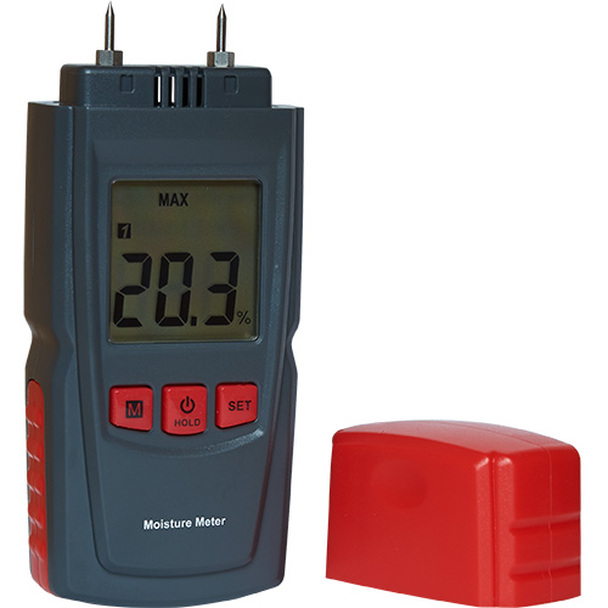
Shop Now - Wood Moisture Meter
To ensure that you’re burning properly seasoned wood on your stove everytime, you should invest in a wood moisture meter.
This is a highly affordable device (£15 to £30) which will quickly and easily tell you how much moisture is in a piece of firewood.
You simply need to turn the device on, stick its two prongs into the wood and the LED display will tell you the percentage of moisture in a piece of wood.
This is the quickest and easiest way of solving this problem.
Guide - for more information on seasoned firewood, read our guide to ‘Ready to Burn’ fuels here.
Issue: chimney downdraft
Chimney downdraft refers to the scenario in which the ‘draw’ of your chimney fails to function properly, which results in your stove performing poorly and in intermittent puffs of smoke emanating from your stove.
Note, that if your stove is continually expelling smoke, then it’s likely to be another issue rather than chimney downdraft (we’ll cover that scenario later in this article).
Chimney downdraft not only results in smoke encroaching upon your living space, but also reduces the performance of your stove, can make it hard to light fires and even result in you having to use more firewood in order to maintain a steady fire.
None of that is ideal.
Chimney downdraft can be caused by several things such as chimney height, wind induced downdraft, dynamic wind loading or damaged chimney components.
But, there is a solution.
Solution: use a chimney fan
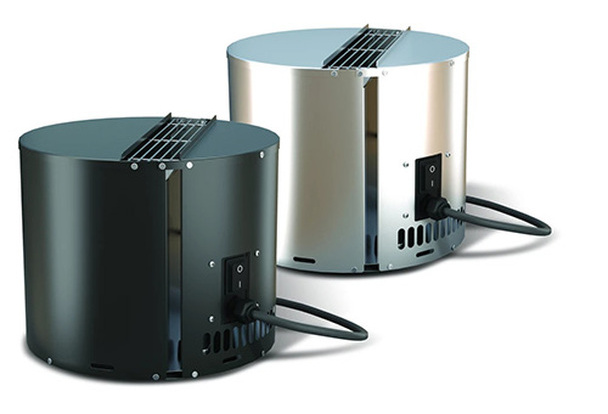
Shop Now - Chimney Fans
You can reduce the impact of chimney downdraft on your stove by installing a chimney fan in your chimney.
A chimney fan helps in two ways. Firstly, it will generally sit at the top of your chimney. This can prevent wind currents from interfering with the draw of your chimney.
Secondly, when in operation a chimney fan will create negative pressure within your chimney, drawing smoke and combustibles away from the stove. With negative pressure created, fresh air will also be pulled into the stove.
This will ensure that your stove functions properly and efficiently, making it easy to light fires, making the fires burn properly and save you money on fuel.
Guide - for more information on chimney downdraft issues, read our guide here.
Issue: blocked chimney
If you find that you are experiencing almost continual smoke coming from your stove into your living room, then the main culprit is likely to be a blocked chimney.
This is particularly dangerous and can be both a serious health and fire risk.
So, if you start experiencing smoke being continuously expelled from your stove, you should investigate immediately.
There are several reasons why a chimney can become blocked:
> Creosote/tar buildup - this occurs when you burn insufficiently seasoned wood. Unseasoned wet wood gives off copious amounts of tar when burned. Over time this can accumulate in your chimney, eventually blocking it.
> Birds' nests or other animals - if you don’t have a bird guard on the top of your chimney, then your chimney could easily become the home of a bird or squirrel. These nests are often a lot larger than people realise and can lead to your chimney becoming completely blocked.
> Debris - other debris and detritus such as leaves and foliage can easily fall into your chimney during stormy weather resulting in a blockage. If your chimney is particularly old, you may even find that parts of the chimney have become dislodged and fallen down the cavity causing a blockage.
Solution: have your chimney swept and use a bird guard
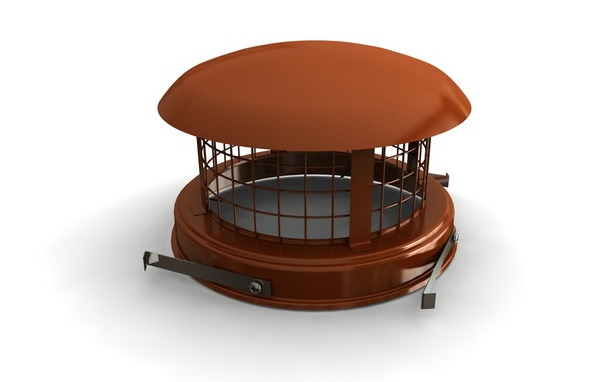
Shop Now - Bird Guards
As we mentioned earlier, if you suspect that your chimney is blocked, you need to act straight away.
There are two things you can do to solve the issue:
> Call a chimney sweep and have them inspect and sweep your chimney.
> Install a bird guard.
Whilst it’s possible to inspect and clean a chimney yourself, we would highly recommend calling in an experienced professional for this task.
An experienced, qualified chimney sweep will know what to look for and will be able to quickly identify the cause of a chimney blockage.
They’ll also have all of the various tools and know the techniques that will quickly remove a blockage.
Once your chimney has been unblocked, you should ensure you have a bird guard installed. This can considerably reduce the chances of your chimney becoming blocked again in the future.
Guide - find out more about having your chimney swept, in our guide here.
Issue: lack of ventilation
Another reason why your stove can perform inefficiently and leak smoke is because it is located in a room with insufficient ventilation.
Stoves and chimneys work on the basis of negative pressure.
The pressure in the room is different from the pressure outside of the chimney, thus pulling air into the fire in the stove and then up and out of the chimney.
This pressure differential is key.
Unfortunately, if the room in which the stove is based does not have enough ventilation, this negative pressure will be disrupted, reducing the chimney’s draw and thus affecting the stove’s performance.
In the worst cases, smoke will fail to travel up the chimney at all and will pour out into your living room.
Solution: install additional air vents
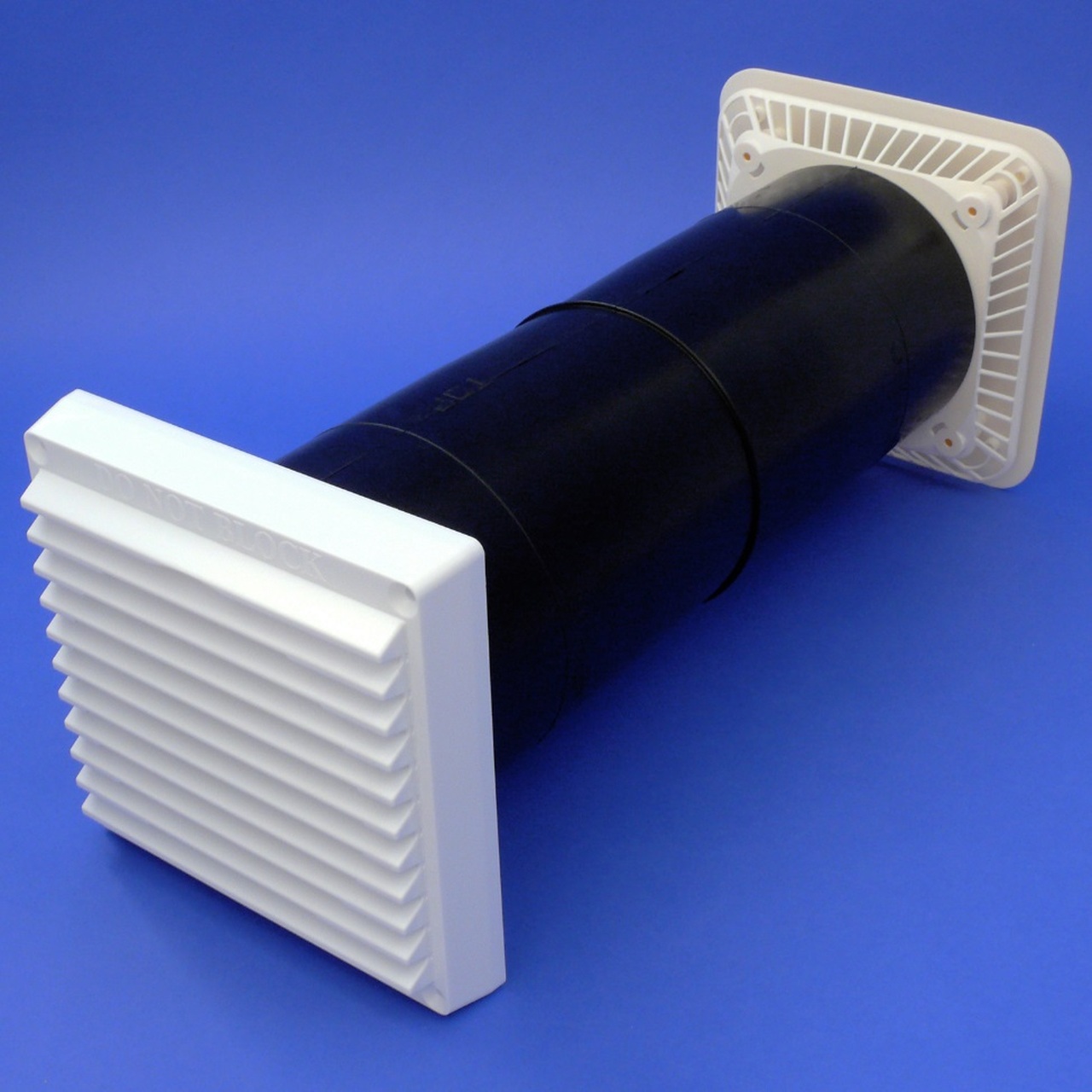
Shop Now - Air Vents
Let’s be clear - if you’ve had your stove fitted by a HETAS-qualified professional, you should not be experiencing a smoky stove due to insufficient air ventilation.
An experienced HETAS installer will have ensured that your stove is located in a room with proper ventilation as per the Building Regulations.
However, if you fitted your stove yourself and didn’t check ventilation first - then this could be the reason why your stove is leaking smoke.
To see if this is the issue, try opening the windows in your living room whilst the stove is burning. If this cures the issue and prevents smoke leaking from your stove, then you’re going to need to add additional air vents.
It’s generally sufficient to fit one, permanently open air vent within the room in which the stove is situated.
Guide - for more information on the types of air vents that are suitable for stoves, read our guide here.
Issue: cracks in the stove
Stoves are durable, long-lasting heating appliances. But, like any home appliance, they are subject to wear and tear.
If your stove is particularly old, then it may have developed cracks. These can occur in a number of different parts of the stove such as the corners of the main body of the stove.
Other gaps can occur too. For example, where the stove pipe connects to the stove’s firebox can become loose over time, with smoke escaping from small gaps where the two parts fit together.
Luckily, there is a solution to this.
Solution: use fire cement
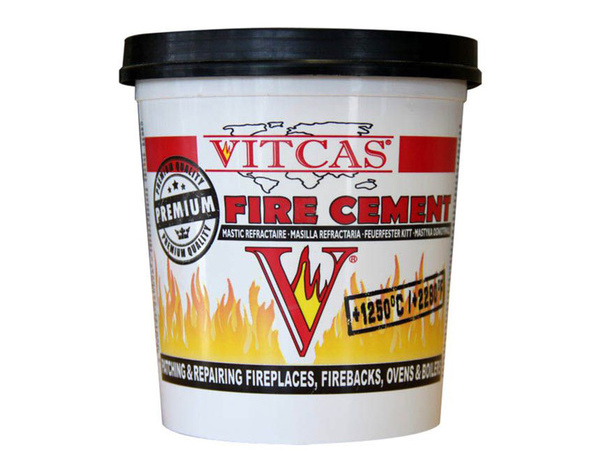
Shop Now - Vitcas Fire Cement
Fire cement is a paste which turns rock hard when exposed to room temperatures or higher.
It’s designed to be used with the likes of stoves, where it can effectively seal any cracks or gaps.
Popular fire cements, such as those manufactured by Vitcas, are able to withstand temperatures of up to 1250ºC, meaning they are perfect for use with wood-burning stoves which can become exceptionally hot during operation.
So, if you have spotted cracks on your stove, simply apply some fire cement and once it has dried and formed a seal, you should no longer experience leaks of smoke.
Guide - find out everything you need to know about fire cement, in our guide here.
Issue: your fires are too small
This may seem like an unusual reason for an inefficient, smoky stove, but if you are burning fires which aren’t utilising the full capacity of your stove, you can find that it gives off a lot of smoke.
Why?
Because, if your fires are too small, your stove won’t be able to get up to its proper operating temperature.
It’s only when stoves reach their operating temperature that they will provide a proper efficient, clean burn of the wood, thereby reducing the production of smoke and combustibles.
Solution: use a stove thermometer
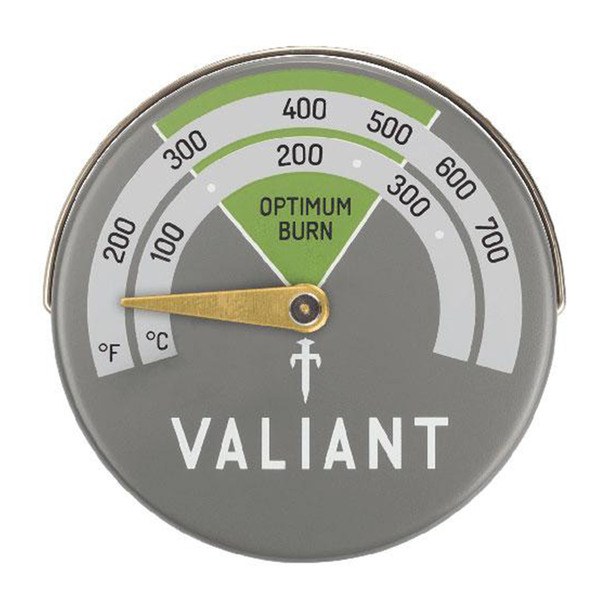
Shop Now - Stove Thermometer
A stove thermometer is an easy way of checking that you are burning the right size fire in your stove.
If you select a stove thermometer with a magnetic attachment, you’ll be able to place it directly onto your stove and thus get an accurate temperature reading.
Good quality stove thermometers will include an indicator which will show the optimum temperature that your stove should be operating at. Keep your fire burning within that ‘optimum range’ and you’ll greatly reduce the amount of smoke produced by your stove.
Get your stove running at its best today
As you can see, there are many reasons why your stove may be burning poorly and inefficiently - but the good news is that there’s a solution for each one!
Here at Trade Price Flues, we have decades of experience dealing with stove and chimney issues, so we keep plenty of the necessary parts and accessories in stock that you may need to get your stove operating properly again.
Plus, we’re always happy to offer advice and answer any questions you may have in relation to your stove or chimney. Call us on 0161 7300 969 or email sales@tradepriceflues.co.uk
Shop stove parts and accessories at Trade Price Flues now
For more stove and chimney advice, read the Trade Price Flues blog…
A Complete Guide to Log Burner Flues | Chimney Fan Buying Guide | How to Stop Birds Nesting In Your Chimney
Latest Articles
-
Air Pollution Down in the UK Despite Record Wood Burner Sales
Great news! Wood-burning stoves, once considered environmental villains, have transformed into eco-f …18th Apr 2024 -
A Guide to Stove Installation in Lodges, Sheds, and Shepherd’s Huts
Shepherd’s huts, lodges, and sheds have become increasingly popular as charming retreats or alternat …25th Mar 2024 -
Pinned vs. Pinless Moisture Meters: Which is Best for Firewood?
When you collect or buy firewood, it usually starts very moist inside. Using sopping wet wood to bur …4th Mar 2024






